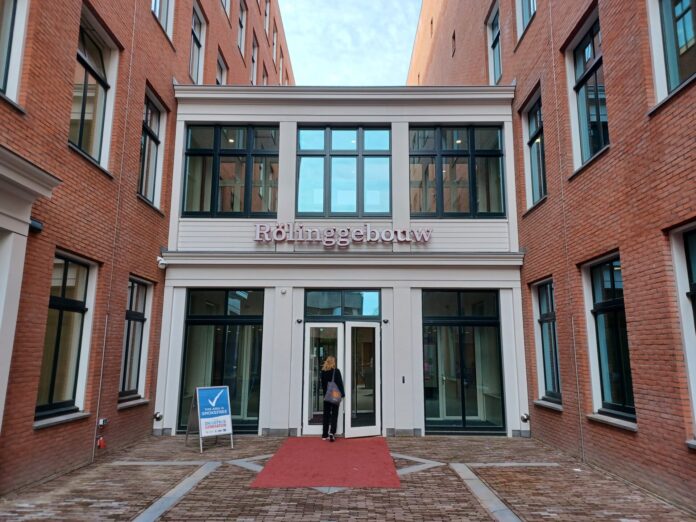Bert Röling was an extraordinary man, says assistant professor of European law Matthijs van Wolferen, but why wasn’t the new building of the law faculty named after a different kind of role model?
Do you know who Hennah Buyne was?
I didn’t. This is remarkable, considering she was the first female judge of Surinamese descent. She worked hard and studied to become a judge, even though the then dean of the Groningen Faculty of Law tried to dissuade her. She is a shining example for every young woman from a similar background studying at the faculty.
However, I hadn’t heard of her until I read the book Vraauwlu.
Everyone knows who Bert Röling was, primarily because anyone who studies law in Groningen gets told about this remarkable man. He served as a judge at the International Military Tribunal in Tokyo, a time immortalised in the book De Offers (The Sacrifices). He was the founder of the Polemological Institute, one of the first multidisciplinary research groups focusing on the concept of ‘war’, and an advocate for the pacifist cause.
His professorial portrait in the faculty room leaves a lasting impression. His image can also be found on the grand mural in the auditorium, painted by his son.
I am a Bert Röling, or at least – because I certainly don’t possess his abilities or talents – I could convince myself that I might be one someday. During my studies, I was surrounded by role models like Röling. I was taught by luminaries like Jan Lokin. Up-and-coming male talents were in charge of workshops. It wasn’t until I became a teacher that I realised the importance of this for shaping a person’s self-image and self-confidence.
It wasn’t until I became a teacher that I realised the importance of role models for shaping a person’s self-image and self-confidence
After I’d assisted a student with her thesis, I suggested that she consider enrolling in the research master (ReMa) programme. Her thesis was undoubtedly worthy of publication, and I couldn’t see how I would give it any other grade than a 10. My fellow assessors shared my opinion. I would have loved to see this woman continue in academia.
‘Have you seen the ReMa programme?’ she said. ‘I don’t want to be the odd one out again.’
Knowing that this woman was usually not so easily deterred, I tried to convince her of her potential future in academia.
‘Have you seen your colleagues?’ she responded. ‘How do I fit in? Who will take me seriously?’
Despite having a Dutch passport and a perfect command of the Dutch language, after three years, this Antillean woman was over it. She had always been ‘the other’. An exception in a relatively homogenous field that is now thankfully getting more and more strong female role models.
Everyone knows Bert Röling, no one knows Hennah Buyne. That doesn’t mean their careers are similar or that Röling is not a role model. We’re allowed to be proud of the mostly white men who have made significant contributions to science. We can, however, make choices that allow others to feel inspired by the idea that, with enough effort and talent, they could one day have their picture on the wall of an auditorium.
We can make choices that allow others to feel inspired by the idea that they could have their picture on the wall of an auditorium
Small things can help with this, and even though everyone, regardless of gender or background, should be able to see themselves in academic heroes who don’t look like them, it doesn’t work like that. A woman intrinsically knows that a man walks a different path, facing entirely different challenges. People from non-Western backgrounds know that they will have to overcome barriers that I can’t even imagine.
I’m not suggesting the building should be named after Hennah Buyne; she simply serves as an example here. Surely, numerous non-Western and/or female jurists have been educated by our faculty. How many of them can we name? How many are celebrated in the field of law?
Everyone knows that Bert Röling was an extraordinary man. Does naming a building after him add anything to this legacy? Does it diminish his stature if the building is named after someone else? A university can make a difference in someone’s life at a crucial and formative moment. What’s better than making eighteen-year-olds feel that they, too, could be worthy of having a building named after them?
Matthijs van Wolferen is an assistant professor of European law.




